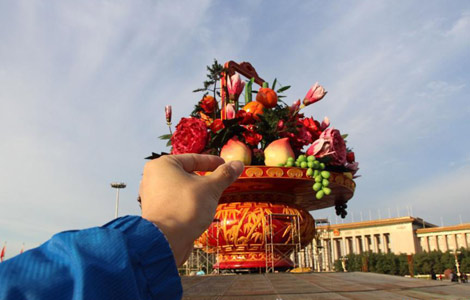Whimsical fabric installation inspired by China's past
Updated: 2013-09-20 15:55
By Kelly Chung Dawson in New York (China Daily)
|
||||||||
As a child in China's lovely Fuzhou, or "Banyan City," the artist Li Ma found refuge within the branches of a massive banyan tree near her home. On warm days, Li and friends played games of imagination among its exposed aerial roots. In the days before the school exams that would determine her future, she prayed to the tree, certain of its mystical powers. In each case, the tree delivered: She attended the best high school, later was accepted to a chemical engineering program that launched a career with a multinational corporation.
Eventually the tree itself became her dream, a haven she remembered for the universe of possibility it seemed to contain. Finally, she quit her job and returned to the creativity of her childhood, taking pen to paper and then painting, and in recent times the whimsical fabric installations that have gained her a following in the US, where she now lives. This month she presents "Wishing Tree," a large-scale fabric homage to the tree of her hometown, in the San Francisco Foundation's Murphy and Cadogan Contemporary Art Awards exhibition at SOMArts Cultural Center in San Francisco.
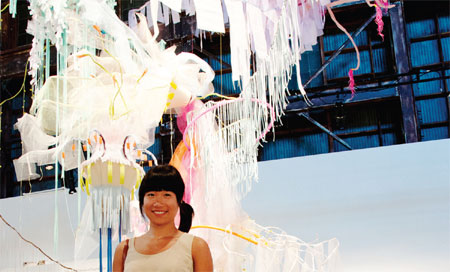 |
|
Chinese artist Li Ma poses with her creation "Wishing Tree", a large-scale fabric installation and homage to the banyan trees of Fuzhou. Gabrielle Reed for China Daily |
"China is in my blood," Ma told China Daily. "I feel nostalgia about what we've lost, and what I left behind. "So much that is beautiful has been lost in the transformation we've gone through, and as a Chinese artist what I aim to do is to bring those elements back to life, to remake the beauty of those lovely moments in traditional culture."
In its rush to modernize, Fuzhou has lost much of what made it famous. Cities across China have faced similar concerns, Li said. The iconic paper lanterns of annual festivals have been replaced by plastic, electronically powered proxies; gardens have disappeared, replaced by supermarkets. But many people still value the experiences and objects that marked their youth, she said.
"In my work I've tried to create a peaceful space for myself and for viewers to navigate through in their own imaginative contemplation," she said. "I think people still remember what inspired them as children, and I try to work from a child's view of the world, the idea that everyday objects can still be transformed into something magical and mystical."
Sewn and molded over 200 hours, "Wishing Tree" uses scraps of fabric, wire, string and other simple materials in a color palette that brings children's cartoons to mind. At times, the tree threatened to take over her tiny studio at the San Francisco Art Institute where she is studying for a master's of fine arts. Until she installed the piece at SOMArts Cultural Center, she had never seen the piece in full, only fitting for an artistic process that always begins with a single scrap of fabric and no plan in mind.
Justin Hoover, the curator and gallery director at SOMArts Cultural Center, along with San Jose Museum of Art senior curator Monica Ramirez-Montagut, selected the recipients of the Murphy and Cadogan Contemporary Art Awards. Ma's work was chosen for its vibrant dynamism that spoke clearly to her cultural heritage, he said.
"She's created something that feels aspirational, while referencing this symbol of her hometown on which people play and climb and dream," he said. "The way that's she done it with the kind of colorful fabric you might see on the streets in China, in the context of San Francisco, a city with a great history of drag and dress-up, is really fun."
The Murphy and Cadogan Contemporary Art Awards are presented to artists early in their careers, and include a $5,000 stipend toward tuition. Tere Romo, arts and culture program officer at the San Francisco Foundation, noted Ma's blending of Chinese and Western aesthetics.
"You look at her work, and you see that Chinese heritage but you don't have to be Chinese to understand the feeling of it," she said.
Ma, who until she began her MFA at the San Francisco Art Institute never received formal arts education in China, stands apart for her ability to straddle a visual language gap that often trips up Chinese artists in the US, Hoover said. Her work is legible to both Chinese and Western cultures, demonstrating an ability to operate using the semiotics of multiple languages.
Ma had not considered art as a career path until she joined her husband in San Francisco several years ago, when he landed a job in the city. But she knew she was ready to leave her chemical engineering training behind, and when she came into contact with a thriving community of artists who had committed to their work, she realized art was a viable path, she said. That path had never felt possible in China, but suddenly anything felt achievable. In the last 3 years, she has exhibited her work in more than 20 galleries, she said.
Despite her openness to Western influence, Ma still believes herself to be extremely traditional, she said. "I'm fundamentally a Chinese person," she said. "People joke that I run my studio like a one-person sweatshop because I work so hard, but I just feel that I have a dream and I'm so incredibly grateful that I didn't believe the idea that it was too late to pursue it."
(China Daily USA 09/20/2013 page11)

 World leaders at UN General Assembly
World leaders at UN General Assembly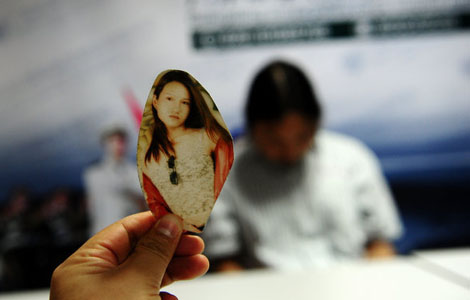
 Plastic surgery can be beauty killers
Plastic surgery can be beauty killers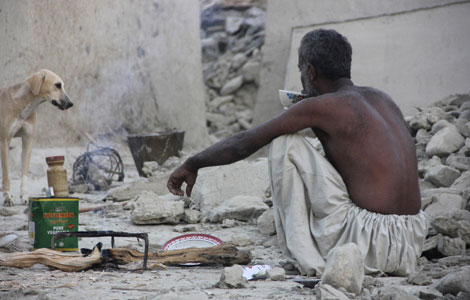
 In photos: Deadly earthquake in Pakistan
In photos: Deadly earthquake in Pakistan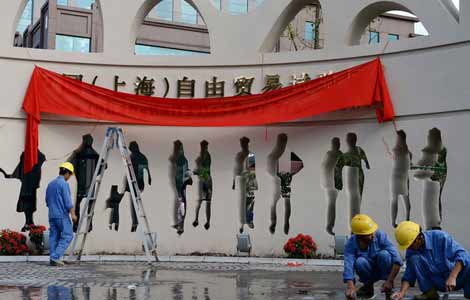
 China to inaugurate Shanghai FTZ on Sept 29
China to inaugurate Shanghai FTZ on Sept 29
 China's investment a 'job-saver' in Europe
China's investment a 'job-saver' in Europe
 Pollution control plan to slash PM2.5
Pollution control plan to slash PM2.5
 The beauty and beasts of selling hot houses
The beauty and beasts of selling hot houses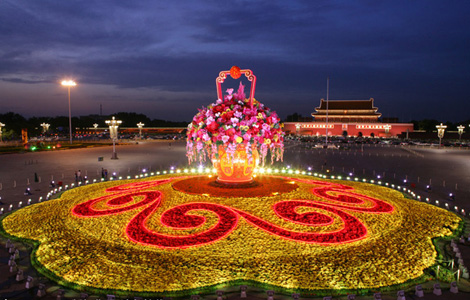
 Tian'anmen's flowery moments for National Day
Tian'anmen's flowery moments for National Day
Most Viewed
Editor's Picks

|

|

|

|

|

|
Today's Top News
208 killed in SW Pakistan earthquake
Foreign Minister Wang makes the rounds at UN
China to surpass US as top trader
Smithfield voters approve deal
Trending news across China
Ultra wealthy population shrinks in China: report
White House to enroll millions in Obamacare
Brazilian president blasts US for spying
US Weekly

|

|


